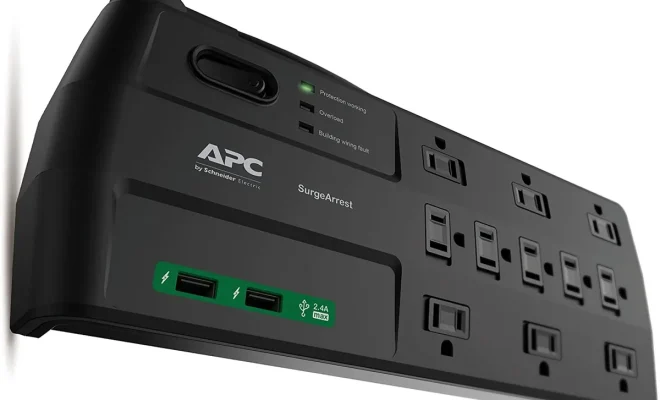Shocking Facts About Power Strips

Introduction:
Power strips are a common household item, providing essential support by expanding the number of outlets available for our numerous devices. However, most of us rarely consider the risks they might pose or how to use them safely. In this article, we will uncover some shocking facts about power strips, increasing awareness about their usage and potential hazards.
1. Overloading Can Cause a Fire:
Power strips can handle only a limited amount of electrical current without posing a fire risk. When the power strip is overburdened with too many devices or devices with high wattage, it can cause overheating and ignite a fire.
2. Not All Power Strips are Surge Protectors:
It’s crucial to understand that not all power strips offer surge protection. Some merely serve as an extension for more outlets without providing protection against electrical surges. Invest in power strips with surge protection to safeguard your devices from voltage spikes.
3. Daisy Chaining is Dangerous:
Connecting multiple power strips together, also known as daisy chaining, is highly dangerous and can lead to overloading of circuits, which creates a fire risk. Most manufacturers strictly warn against this practice in their safety guidelines.
4. The Lifespan of Surge Protectors Is Limited:
Over time, surge protectors lose their effectiveness due to the internal components degrading after multiple surge events. They should be replaced every three to five years, or after experiencing a significant electrical surge.
5. Not All Devices Should Be Plugged Into Power Strips:
High-wattage appliances like refrigerators, air conditioners, space heaters, and microwaves should not be plugged into power strips. These heavy-duty appliances draw significant amounts of electricity and can overload the strip easily, posing fire hazards.
6. GFCIs Are Not Present on Most Power Strips:
Ground fault circuit interrupters (GFCIs) are essential safety features in certain areas, such as kitchens and bathrooms, where moisture can cause electrical shocks. However, most power strips lack GFCIs. Hence, do not use power strips in wet or moisture-prone environments.
7. UL Certification is Essential:
Before purchasing a power strip, check if it has been certified by a recognized safety organization like Underwriters Laboratories (UL). These certifications ensure that stringent safety standards are met and that the power strip has undergone thorough testing.
Conclusion:
Power strips may seem like a simple solution to our ever-growing need for outlets, but using them without caution can lead to severe consequences. Understanding these facts about power strips can help you use them safely and protect your home from potential electrical hazards. Remember: the safety of your devices and home lies in your hands.





